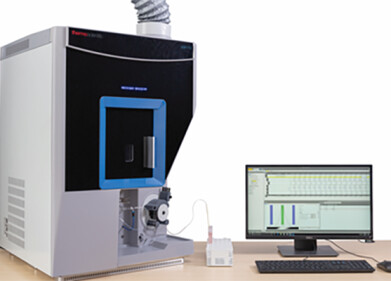Mass Spectrometry & Spectroscopy
Is There Any Science Behind Beauty Sleep?
Feb 08 2020
A new study from the University of Manchester suggests the popularised term "beauty sleep" could be more than just a saying. After analysing body clocks of mice, a team of biologists maintain a good night's sleep plays an important role in preparing the body for the day ahead and replenishing cell structures.
The findings were published in the journal Nature Cell Biology and explain how body clock mechanisms support the extracellular matrix (ECM), a three-dimensional network of macromolecules that build connective tissue cells such as skin, bone, cartilage and tendons. Professor Karl Kadler, lead author of the study, argues that understanding the importance of the body clock and the extracellular matrix could shed new light on the ageing process.
Collagen and connective tissues
Kadler explains that more than half the body is made up of matrix. Of this matrix, 50% is collagen, a key extracellular matrix structural protein and major component of connective tissues. Roles of collagen include providing the skin with structure and elasticity and strengthening bones. By the time the body reaches the age of 17 collagen has fully formed, suggesting the body starts to slowly deteriorate moving forward.
"Collagen provides the body with structure and is our most abundant protein, ensuring the integrity, elasticity and strength of the body's connective tissue," says Kadler.
The replenishing role of sleep
Collagen is made up of rope-like structures called fibrils, which are woven together by cells to create tissues. During the research, the biologists discovered two types of fibrils. The first were relatively thick, measuring around 200 nanometres in diameter. They form by the age of 17 and stay with the body throughout its lifespan. The second type of fibril was thinner, measuring just 50 nanometres in diameter. As the body is put through its daily paces these thinner fibrils snap and become damaged. They are automatically repaired and replenished at night, with the team asserting that sleep plays a critical role in supporting this process.
"It's intuitive to think our matrix should be worn down by wear and tear, but it isn't and now we know why: our body clock makes an element which is sacrificial and can be replenished, protecting the permanent parts of the matrix."
Kadler says detailed knowledge of how the body clock influences the extracellular matrix could help scientist understand human biology at its most fundamental level. "It might, for example, give us some deeper insight into how wounds heal, or how we age," he predicts.
From exploring the role of the body clock to analysing interactions between different species, science is continually offering new insight into how the world works. To find out more about the cutting-edge composition-gradient multi-angle light scattering (CG-MALS) technique, don't miss 'Fusion Protein Complexes Analysed by CG-MALS - Non-equivalent, Multivalent Interactions.'
Digital Edition
Lab Asia 31.2 April 2024
April 2024
In This Edition Chromatography Articles - Approaches to troubleshooting an SPE method for the analysis of oligonucleotides (pt i) - High-precision liquid flow processes demand full fluidic c...
View all digital editions
Events
InformEx Zone at CPhl North America
May 07 2024 Pennsylvania, PA, USA
May 14 2024 Oklahoma City, OK, USA
May 15 2024 Birmingham, UK
May 21 2024 Lagos, Nigeria
May 22 2024 Basel, Switzerland







.jpg)










